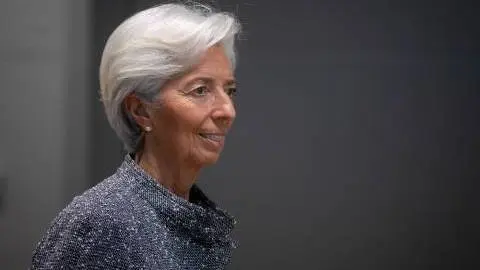BoJ’s “whatever it takes”
Markets rise on another “whatever it takes” - this time from the Bank of Japan. But is there any room for more?
Glass half empty, cracked, with a dead spider in it
OK, I'm not known for my sunny disposition, but even I can see that yesterday's Bank of Japan (BoJ) "Whatever it takes" announcement could be viewed positively by investors in risk assets. That basically makes it all the big central banks. Smaller central banks also all seem to be doing about as much as they can, with a few more rate cuts from some still to come, and a bit more liquidity from RRR cuts mixed with a bit of financial forbearance on things like leverage ratios for banks (Bank of England's latest). But basically, the monetary spigots are wide open.
Just to briefly re-cap on yesterday's BoJ pledges. These amount to the following (my views in parentheses)
- The current Japanese Government Bond (JGB) target of JPY80tr per year of outright purchases to be replaced by "unlimited" JGB purchases (yet the BoJ were not even needing to buy that amount in order to hit their zero % yield target for the 10Y JGB - so surely this is the removal of a non-binding constraint?)
- A quadrupling of their corporate bond purchases (this is a bit more meaningful)
- Enhance the "special funds" supplying operation. This includes:a) expanding the range of eligible collateral b) increase the number of eligible counterparties and c) apply a positive interest rate of 0.1% on balances held by banks corresponding to loans extended through this operation.
For more detail, here is the BoJ's own account of its enhanced measures.
The final measure seems a bit of a hybrid of the Bank of England's funding for lending scheme, mixed with the Fed's Interest on Excess Reserves, and should help with corporate liquidity problems.
But, and I think it is worth returning to this, the BoJ's outlook for growth for 2020 is -3 to -5% (ING f -4.9% towards the bottom of this range) and the outlook for inflation is -0.7% to -0.3%. The outlooks for fiscal 2021 look fanciful and overly optimistic at 2.8% to 3.9% - basically saying that 2021 returns all the lost growth on top of the underlying growth rate for a net "no loss" position. That is basically nonsense. See the BoJ's argument and make your own mind up.
The BoJ's forecasts, I think, encapsulate what a lot of market participants are assuming about this crisis, which makes them blind to current bad news, but celebrate every positive policy response. And I struggle with this. I think they are assuming:
- It will basically all be over by Jan 1 2021 (there's a lot of optimism in a vaccine)...
- ...and no second wave, despite some questionable opening ups in some parts of the world, and still worsening case counts in others.
- It will have left no residual damage, so output lost will be restored with pent up demand returning us to more or less where we would have been before
In short, a nasty, but temporary interlude from the prevailing growth trend.
All of these assumptions seem highly questionable to me. I would prefer a base pricing model that assumed the following:
- Some permanent and perhaps substantial loss of potential output due to business failures, in spite of Central banks best efforts
- Jan 2021 is not "business as usual, but some social distancing measures remain. International travel remains a shadow of its former self, consumer spending on services remains dampened, and manufacturing adopts new, clunkier and probably less efficient and less profitable (but safer) supply chains.
- This may also be wrapped up with a more nationalistic policy on supply, possibly tied around a flaring up of trade war issues once more.
So as I said, I can't blame the market for reacting positively to news like this, or indeed the continued progress towards re-opening. But for me, the present value of the future I see, does not warrant these levels. I'm not a buyer.
Asia today
There's not much else going on today: Prakash Sakpal writes this on Thailand: "The Thai government is planning to extend its state of emergency by a month until 31 May. Meanwhile, the country’s tourism authority has dashed hopes of a near-term economic recovery as it expects a 60% plunge in tourist arrivals this year with this, in turn, denting tourism income by at least half. All this adds to the downside risk to our view of a 7.7% YoY GDP fall in 2Q20 and full-year contraction of 4.3%. We expect an additional 50 basis point central bank (BoT) rate cut this quarter, taking rates to a record low of 0.25%, fueling the need for unconventional easing after that".
This publication has been prepared by ING solely for information purposes irrespective of a particular user's means, financial situation or investment objectives. The information does not constitute investment recommendation, and nor is it investment, legal or tax advice or an offer or solicitation to purchase or sell any financial instrument. Read more
Download
Download opinion
28 April 2020
ING’s Covid-19 roundup: Lagarde and Powell’s whatever-it-takes moment This bundle contains 11 Articles